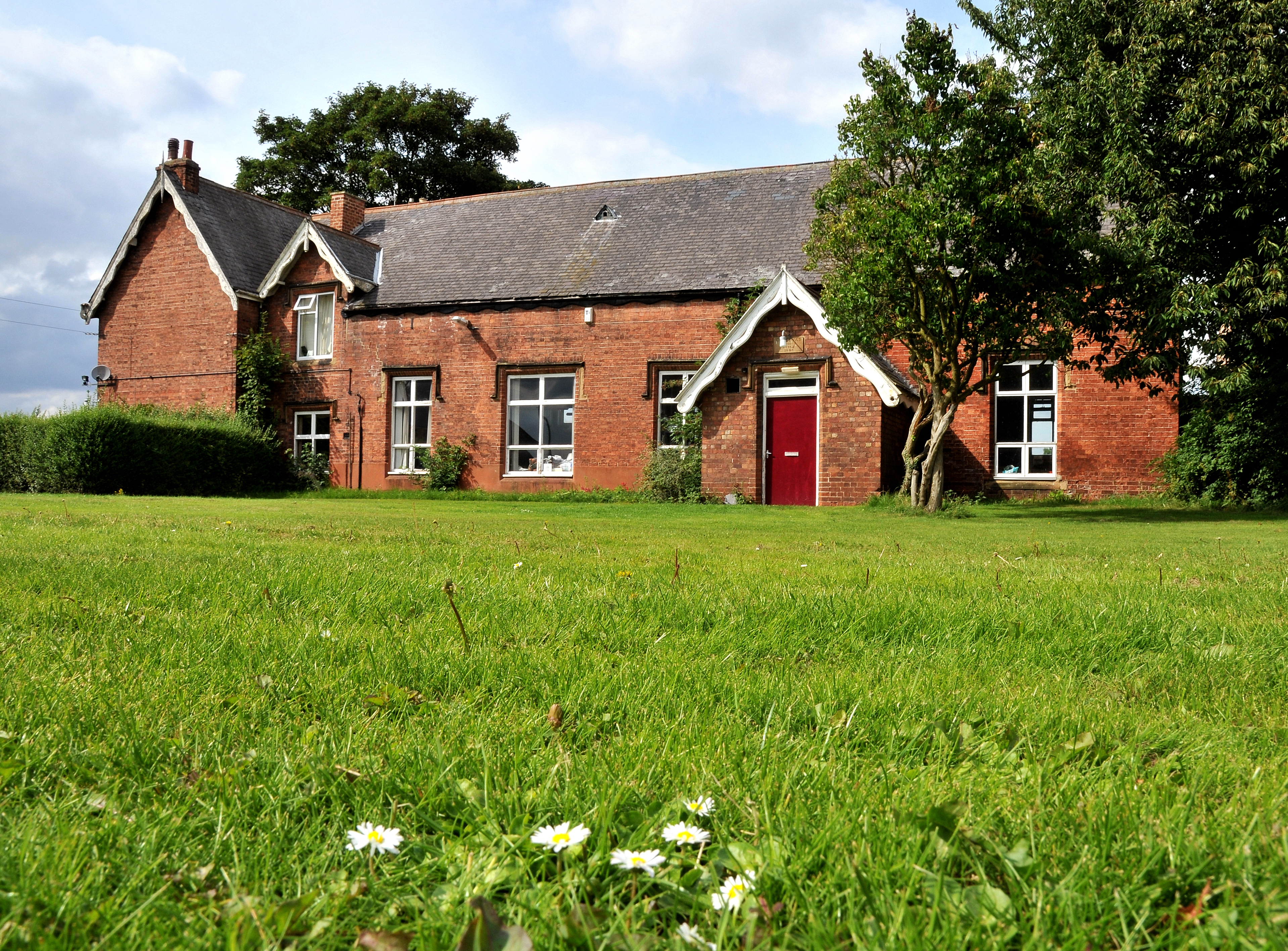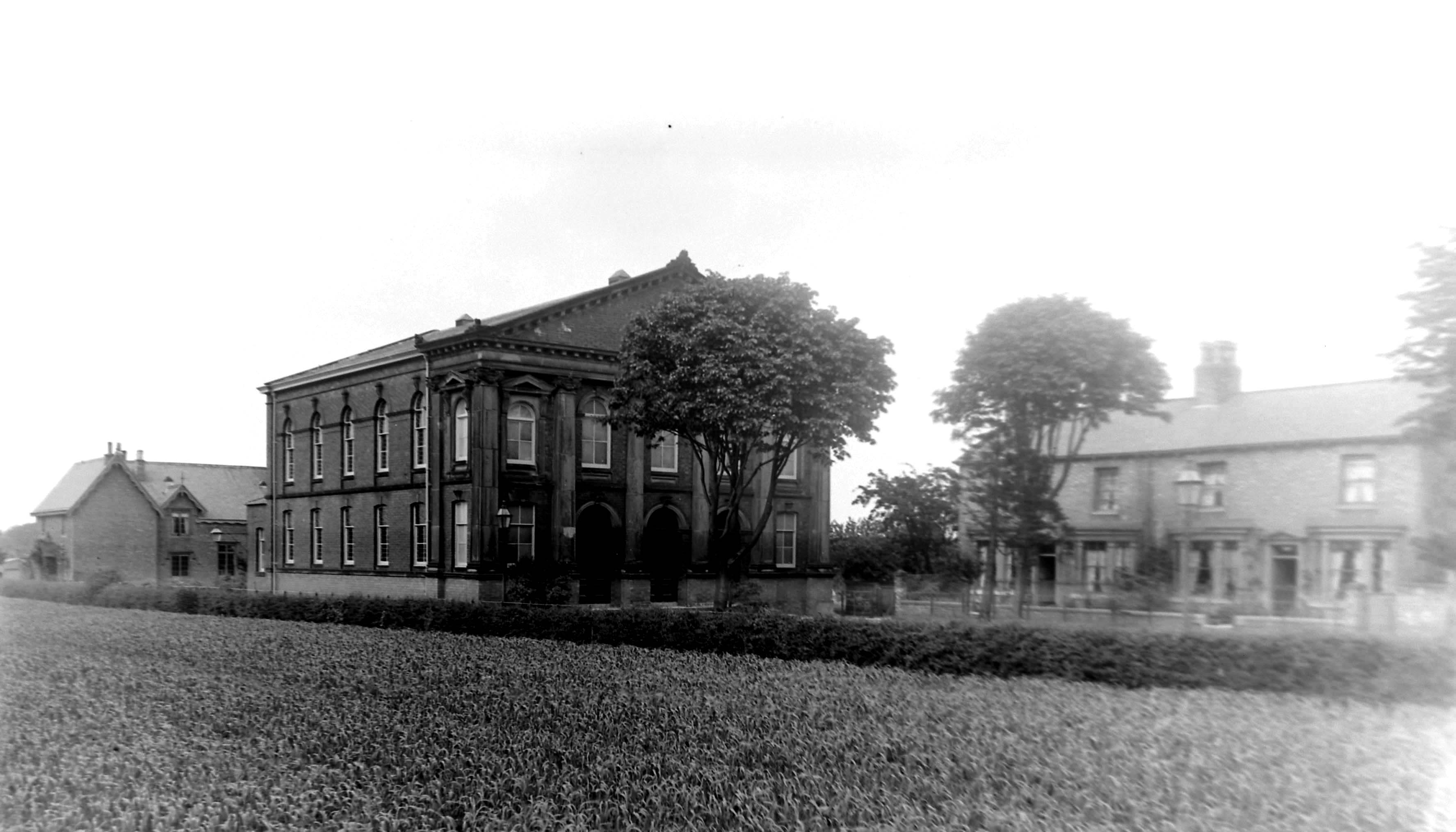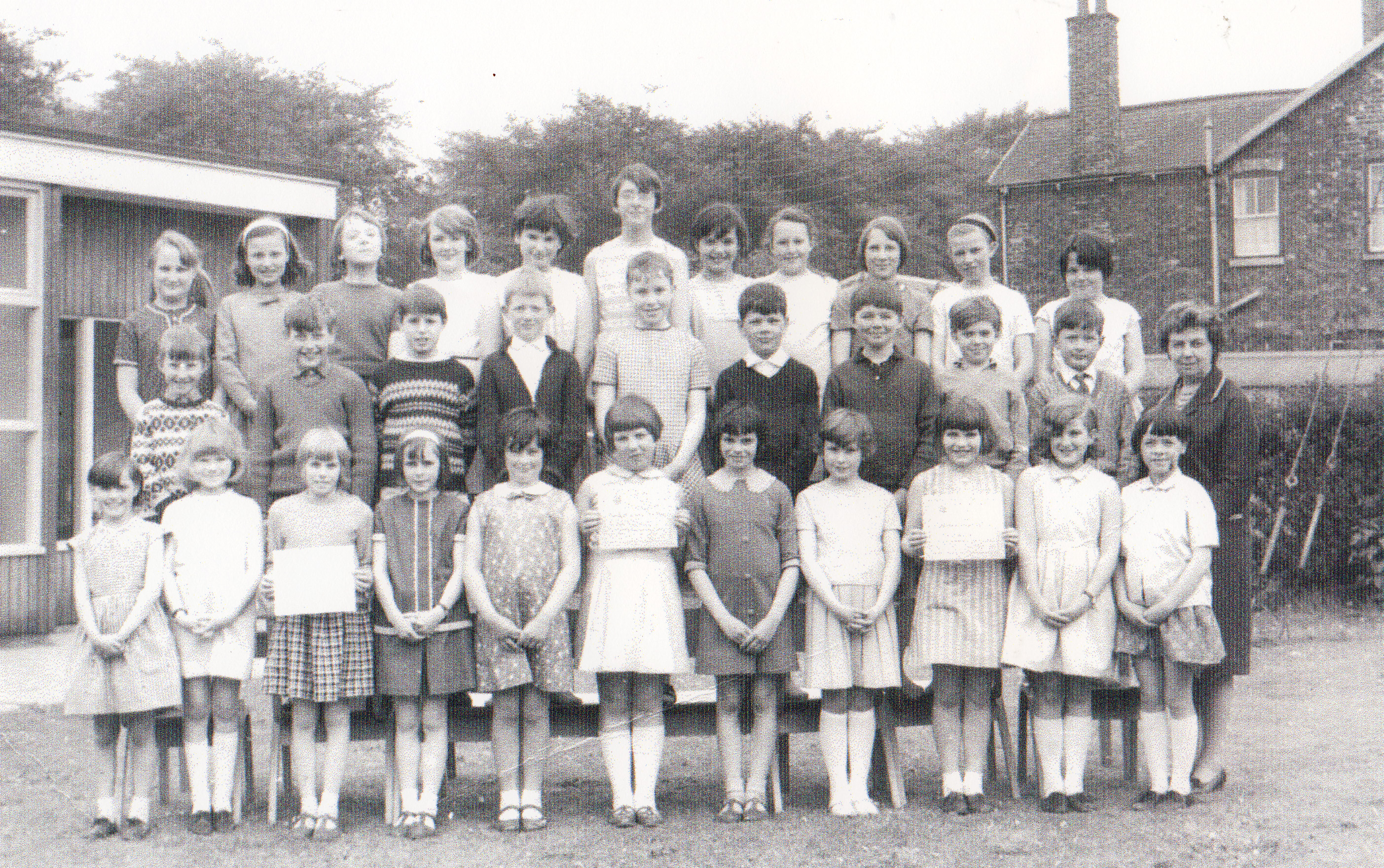THIS SCHOOL IS KNOW LOCALLY AS: The Old Primary School.
FROM THE BLUE SIGN, YOU CAN SEE THE ROOFLINE OF THE REAR OF THE FORMER SCHOOL. THE PICTURE BELOW SHOWS THE FRONT OF THE SCHOOL, WHICH FACED THE REAR OF THE METHODIST CHURCH.

In 1846, although there were a small number of private schools and academies operating from houses, there was only one purpose-built school in Snaith. It was situated at the bottom of Church Lane and was known as Snaith Grammar School (built 1626). It was managed by the Church of England.
In 1847, the British Government awarded grants to the Wesleyan Methodist Church to encourage the building of schools. The Snaith Circuit took advantage and built this school in 1848 on part of a large plot of land that they had acquired. At a later stage, they built a Church and a row of houses for the church officers (1862).
The school had the provision for 200 children. Although they did give priority to the children of members of their congregation, they did endeavour to operate an open-door policy.As well as daily classes in Reading, Writing and
Arithmetic, there was also a Sunday School for religious instruction.When the school opened, the government had
recently introduced pupil teachers (13-18 year olds) who assisted the full time
teachers. Thomas Lister was the first pupil teacher in Snaith, teaching at this school until 1851.
JULY 1867- The school was divided , using curtains, into two departments- Infants (under 7) and the Upper School.
JANUARY 1868- A bazaar was held to raise money for the cost of adapting the school on a more permanent basis
1870 - School fees were 4 old pence per week (when the average wage was £25 per year), In addition, books had to be purchased. Many poor families struggled to afford these charges and consequently kept their children at home.
1878- A new Grammar School was built on Pontefract Road to replace the old school on Church Lane that was no longer fit
for purpose. The level of education was higher than it was in the 1848 school.
1880- School attendance was made compulsory for children up to the age of 10.
1891- Free education was introduced.
1902- Local Education Authorities (LEA’s} were created, The West Riding County Council took over the control of this school as well as the school on Pontefract Road.
The level of education was standardised across both schools and pupils were selected on a geographic basis. Children from the west side of Snaith went to the Pontefract Road school. Children from the east side of Snaith went to this school.
1944- The Education Act raised the school leaving age to 15 and created two types of school (a) Junior(Primary)schools for pupils aged 5 to 11 and (b) Secondary Schools for pupils aged 11 to 15..
This school became Snaith Junior School and The Pontefract Road School became Snaith Secondary School.
The 1944 Education Act also introduced a new exam for pupils in their final year of Junior School, at the age of 11. It was know as the eleven plus, because it involved children aged 11-12 Pupils who passed the exam were entitled to transfer to a Grammar School, where a high level of further education was available. Those who did not pass the exam transferred to a Secondary School.
In September 1976 a new Primary school opened in Snaith for pupils aged 4 to 11 and the old school became home to a playgroup and a centre for adult education, as well as a meeting place for a number of local groups. Eventually it became a community centre known as Wesley Place.
In 2019 the building was sold by The Methodist Church and it was converted in to seven apartments as a care facility for The Bridge Care Group. They provide assisted independent living for adults with autism and learning disabilities.
FROM THE BLUE SIGN, YOU CAN SEE THE ROOFLINE OF THE FORMER SCHOOL. THE PICTURE BELOW SHOWS THE FRONT OF THE SCHOOL, WHICH FACED THE REAR OF THE METHODIST CHURCH.
This is how the former school looked just before its conversion in 2019.. When it was a school, the Headmaster lived in the house on the left hand side. The entrance porch can be seen on the right. Above the door is a date stone of 1848.
The old photograph below clearly shows the school situated behind the Methodist Chapel. The Head Master's house is on the left. The Blue Plaque is on the fence at this end of the school.
Also visible on the photo is the row of house built for the church officers.

.jpg)
Alfred Bramwell was Headmaster for 40 years

Miss Dorothy Poskitt (pictured here with some of her pupils) was Head Teacher of this school from 1951, at a time when class sizes were expanding due to the post war baby boom. She successfully managed the move to the new school in 1976 and retired in 1981.
Her Grandfather was Charles Sandoe, who was Head of the Pontefract Road school for over 30 years from 1890.
